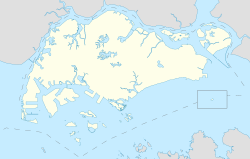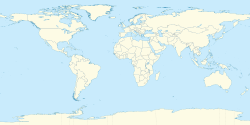Downtown Core | |
|---|---|
| Other transcription(s) | |
| • Chinese | 市中心 |
| • Malay | Pusat Bandar |
| • Tamil | டவுன்டவுன் கோர் |
From top left to right: Skyline of Singapore's Downtown Core, Aerial view of the Civic District, Parliament House, Raffles Place, The Helix Bridge with Marina Bay Sands in the background, Old Supreme Court Building, Esplanade – Theatres on the Bay, The Merlion with the Marina Bay Financial Centre in the background | |
 Singapore's Downtown Core | |
 Location in Central Region | |
| Coordinates: 1°17′12″N103°51′13″E / 1.28667°N 103.85361°E | |
| Country | |
| Region | Central Region |
| CDC | |
| Town council |
|
| Constituency | |
| 1st DGP exhibited |
|
| 2nd DGP exhibited |
|
| PA incorporated |
|
| Government | |
| • Mayor | Central Singapore CDC |
| • Members of Parliament | Jalan Besar GRC Tanjong Pagar GRC |
| Area | |
• Total | 4.34 km2 (1.68 sq mi) |
| • Rank | 44th |
| Population | |
• Total | 4,660 |
| • Rank | 33rd |
| • Density | 1,100/km2 (2,800/sq mi) |
| • Rank | 35th |
| Ethnic groups | |
| • Chinese | 2,970 |
| • Malays | 40 |
| • Indians | 320 |
| • Others | 390 |
| Postal district | 1, 6, 7 |
The Downtown Core is the historical and downtown centre of the city-state of Singapore and the main commercial area in Singapore excluding reclaimed lands with two integrated resorts such as the Marina Bay Sands, one of the most expensive buildings in the world, with a luxurious standalone casino at Bayfront Avenue. There are many skyscrapers in Raffles Place, Tanjong Pagar and Marina Bay CBD with a height limit of 280m. It is one of the eleven planning areas located within the most urbanised Central Area, [5] forming the latter's dense urban core. It is bounded by Rochor to the north, Kallang to the northeast, Marina East and Marina South to the east, Straits View to the southeast, Bukit Merah to the south, as well as Outram, Museum and Singapore River to the west.
Contents
As the financial Heart of Singapore, the Downtown Core houses the headquarters and offices of numerous corporations, as well as the Singapore Exchange. The area is also home to many governmental institutions, notably the seat of Parliament and the Supreme Court of Singapore.
Singapore's modern history began in this area, when Stamford Raffles and representatives of the British East India Company landed along the banks of the Singapore River to set up a free port in Southeast Asia. As the old harbour grew along the mouth of the river bank, the city naturally expanded around it, creating what is now the Central Area.
The name "Downtown Core" remains relatively unheard of and the term Central Business District (CBD) is commonly used in conversation instead. However, the area known as the CBD actually comprises a smaller area within the Downtown Core itself, taking up the south-western and western portions of the planning area, consisting largely of many skyscrapers. It is made up of eight subzones, Anson, Cecil, Clifford Pier, Maxwell, Phillip, Raffles Place and Tanjong Pagar and Marina Centre. [5] The core of the CBD has since extended well beyond its boundaries and the term is even often at times used to refer to the Central Area as a whole.











